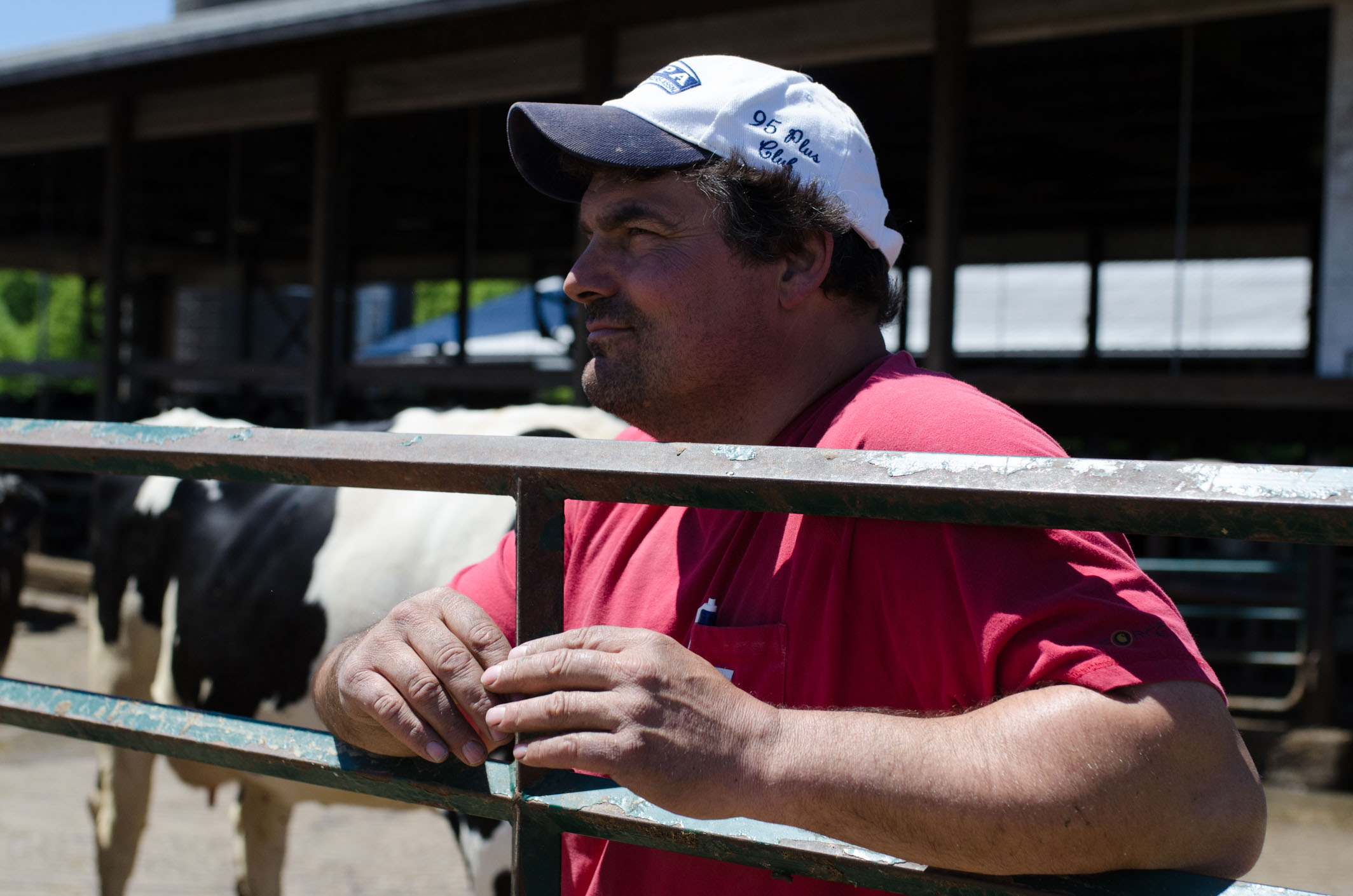
Dairy farming today looks more like a gambling risk than a way of life and minimizing risk is a welcome concept to dairy producers who feel like they are losing control in a poor dairy economy. With sagging markets, the last thing dairy producers need to worry about is a pollution risk. To help minimize or prevent agricultural pollution risks, the Michigan Agriculture Environmental Assurance Program (MAEAP) was developed and today more than 4,700 farmstead, cropping, livestock or forest, wetlands and habitat systems have been verified in Michigan.
The first producer to be verified in three MAEAP systems, Farmstead, Cropping and Livestock, in Mason County, was Larsen Dairy Farm, owned by Burke and Lisa Larsen. They work 1,600 acres and milk 500 cows.
When Burke Larsen was first approached to become verified, he admits, he was a little overwhelmed with the process. He explained, “Our initial reaction was one of ‘I’ll never be able to do that,’ but we just kept working at it.” Larsen continued, “It’s not a snap your fingers and get it done type of thing. There were a lot of professionals involved with the process to help us get there and while it was a big step, it was a necessary step to ensure the future of agriculture.”
MAEAP is an innovative, proactive and voluntary program that helps farms of all sizes and all commodities prevent or minimize agricultural pollution risks. It ensures that Michigan farmers are engaging in cost-effective pollution prevention practices and working to comply with state and federal environmental regulations. MAEAP Director Joe Kelpinski describes MAEAP as an environmental check that lets a farm know where they are at and how to find solutions to do it better. They essentially act as an environmental consultant.
MAEAP verifier, Tom Young said overall, the most difficult obstacle for producers, when initially approached about MAEAP, is trusting in the process. He commented, “Farmers need to be comfortable and confident in the local MAEAP technician they are working with toward verification. Our goal is to find cost effective ways to reduce environmental issues on the farm by partnering with them.”
The process to become verified has three phases. It starts off with an overview of the program. Then, a MAEAP technician visits the farm and gathers information, using a set of tools to assess various practices, such as how pesticides, herbicides and petroleum products are stored, or how waste is managed. The technician then sits down with the farmer and comes up with an action plan. Once they have a plan, the on-farm verification ensures the farm has implemented environmentally sound practices.

The fact that MAEAP is a voluntary program appealed to Larsen, “I appreciate that it is voluntary and that we can work at our own pace, otherwise it might be such a financial burden, that we couldn’t do it. The program gives you a lot of freedom to work toward a common goal.” Larsen added, “They are continually evolving to make conservation practices more adaptive to the farm and using common sense in their approach.”
With the current dairy climate, Young admitted it is extremely hard to justify spending money on additional environmental practices, but not all changes require additional financial outlays. He explained, “Management changes like good nutrient and manure practices can save money. Many times, farms can become Cropping System verified without spending anything.”
Benefits of being verified can be seen in several ways Young stated, “Identification and correction of potential risks on the farm, liability protection from accidental discharges, reduction in insurance liability coverage costs and demonstrating to neighbors that your farm is environmentally proactive are all benefits to being MAEAP verified.”
The MAEAP Livestock System Primarily focuses on environmental issues related to livestock activities, including manure handling, storage and field application, as well as conservation practices to protect water and prevent soil erosion.
Prioritizing the projects was part of the success at the Larsen’s farm. The Larsens constructed fuel, pesticide, and fertilizer storage units and a state-of-the-art manure storage and handling disposal system. Their one-of-a-kind loop facility reclaims bedding sand for reuse and includes a mechanical manure separator. It also utilizes wash water to transport manure to concrete-lined pits in an environmentally safe manner. Manure is then spread on crop fields at rates that will not cause runoff or infiltration into ground or surface water.
There are some definite financial benefits to better nutrient management stated Larsen, “Our manure management system is easier, and we have more options now than we used to have and we are more specific in how we apply fertilizer.”
Burke commented that farmers have always tried to be good stewards of the land, “It’s nice to talk to landlords and having them recognize that we are MAEAP verified. They are proud of that and that’s pretty special.” Burke concluded, “I feel now we are being more observant and paying closer attention to the future.”
–Melissa Hart
This article was originally published in the September issue of the Michigan Milk Messenger. Subscribe »

